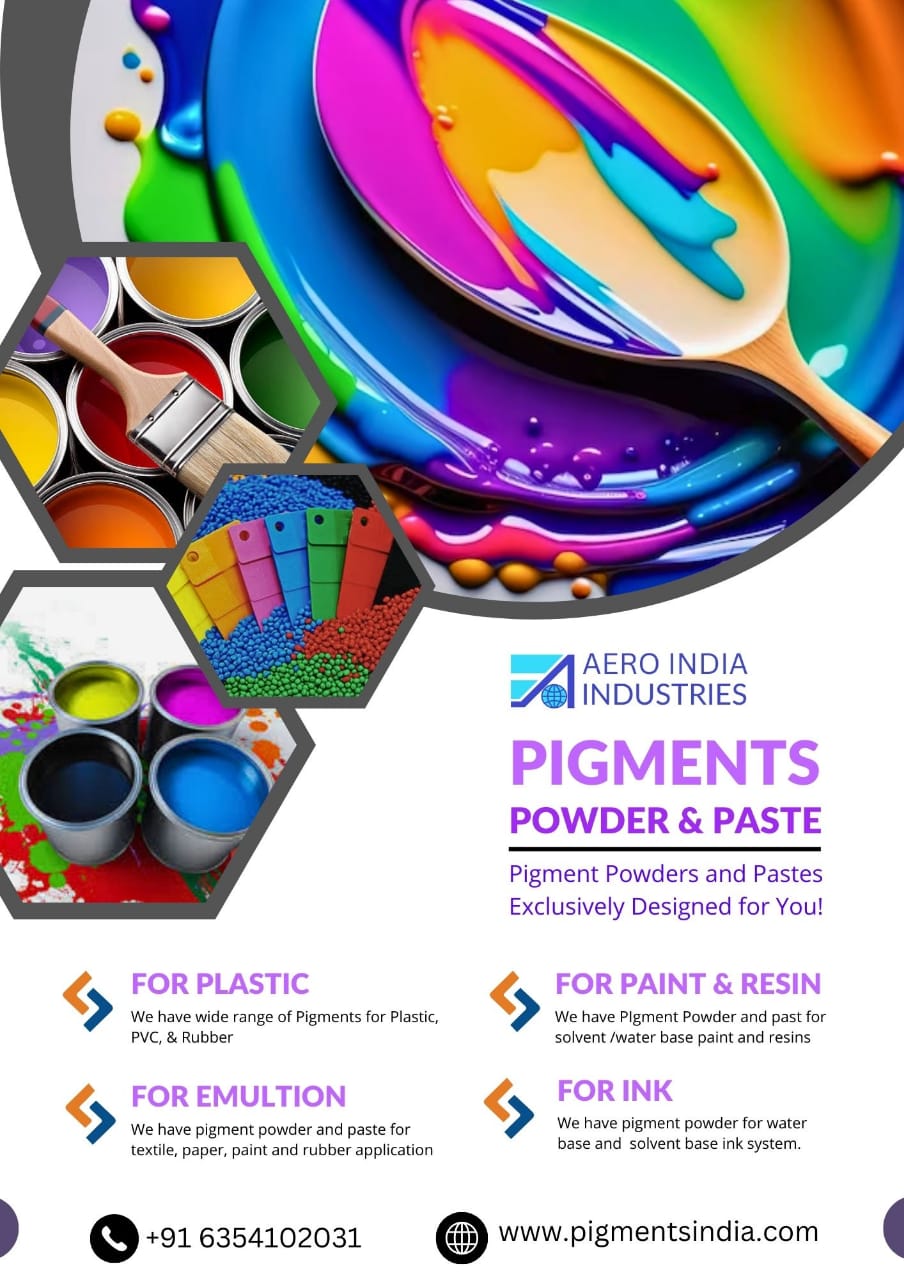What is a Pigment? A pigment is a substance that imparts color to materials by selectively absorbing and reflecting light. Unlike dyes, which dissolve in liquids, pigments are insoluble particles that are dispersed in a medium (such as ink, paint, or plastic) to provide color. Types of Pigments Organic Pigments – Made from carbon-based molecules, offering bright and vibrant colors. Examples: Phthalocyanine Blue, Azo Pigments, Quinacridone Red. Inorganic Pigments – Derived from minerals or metals, known for their durability and opacity. Examples: Titanium Dioxide (White), Iron Oxide (Red, Yellow, Black), Ultramarine Blue. Specialty Pigments – Designed for unique effects like fluorescence, pearlescence, or metallic finishes. Examples: Pearl Pigments, Fluorescent Pigments, Thermochromic Pigments. Applications of Pigments Ink Industry – Used in printing inks for packaging, publications, and textiles. Paint & Coatings – Enhances durability, opacity, and aesthetic appeal. Plastics & Polymers – Gives color to PVC, PP, PE, and other polymers. Textiles – Used in pigment printing for fabric coloring. Resin & PU Casting – Provides consistent color in molded products. Key Properties of Pigments Color Strength – Intensity of color imparted to a medium. Lightfastness – Resistance to fading when exposed to light. Heat Stability – Ability to withstand high temperatures. Chemical Resistance – Stability in different chemical environments. Opacity & Transparency – Determines how much light passes through the pigment layer. Since you specialize in pigment pastes and powders, are you looking for any specific pigment-related details for your industry?
Chat with us on WhatsApp
×
This is your website preview.
Currently it only shows your basic business info. Start adding relevant business details such as description, images and products or services to gain your customers attention by using Boost 360 android app / iOS App / web portal.
https://www.aeroindiaindustries.com/latest-update/what-is-a-pigment-a-pigment-is-a-substance-that-i/156
What is a Pigment? A pigment is a substance that i...

2025-01-31T12:46:24
What is a Pigment? A pigment is a substance that imparts color to materials by selectively absorbing and reflecting light. Unlike dyes, which dissolve in liquids, pigments are insoluble particles that are dispersed in a medium (such as ink, paint, or plastic) to provide color. Types of Pigments Organic Pigments – Made from carbon-based molecules, offering bright and vibrant colors. Examples: Phthalocyanine Blue, Azo Pigments, Quinacridone Red. Inorganic Pigments – Derived from minerals or metals, known for their durability and opacity. Examples: Titanium Dioxide (White), Iron Oxide (Red, Yellow, Black), Ultramarine Blue. Specialty Pigments – Designed for unique effects like fluorescence, pearlescence, or metallic finishes. Examples: Pearl Pigments, Fluorescent Pigments, Thermochromic Pigments. Applications of Pigments Ink Industry – Used in printing inks for packaging, publications, and textiles. Paint & Coatings – Enhances durability, opacity, and aesthetic appeal. Plastics & Polymers – Gives color to PVC, PP, PE, and other polymers. Textiles – Used in pigment printing for fabric coloring. Resin & PU Casting – Provides consistent color in molded products. Key Properties of Pigments Color Strength – Intensity of color imparted to a medium. Lightfastness – Resistance to fading when exposed to light. Heat Stability – Ability to withstand high temperatures. Chemical Resistance – Stability in different chemical environments. Opacity & Transparency – Determines how much light passes through the pigment layer. Since you specialize in pigment pastes and powders, are you looking for any specific pigment-related details for your industry?
2025-01-31T12:46:24
Keywords
- pigment pastes
- pigment layer
- pigment printing
- light passes
- color imparted
- consistent color
- polymers textiles
- packaging publications
- printing inks
- fluorescence pearlescence
- unique effects
- insoluble particles
- selectively absorbing
- imparts color
- ink paint
- liquids pigments
- pigments ink industry
- medium lightfastness resistance
- provide color types
- specific pigmentrelated details
- pvc pp pe

Submit Your Enquiry